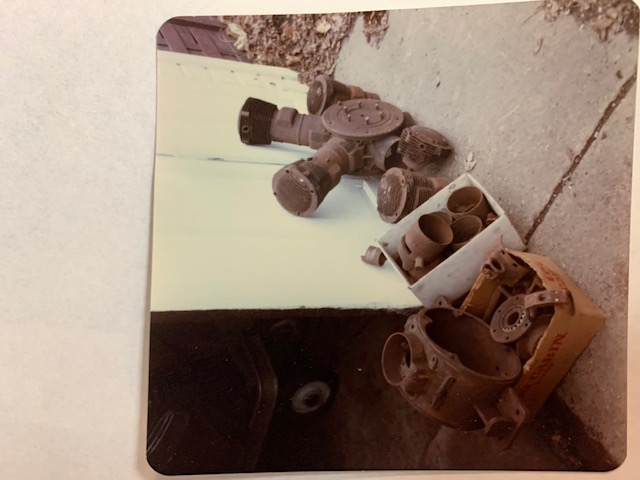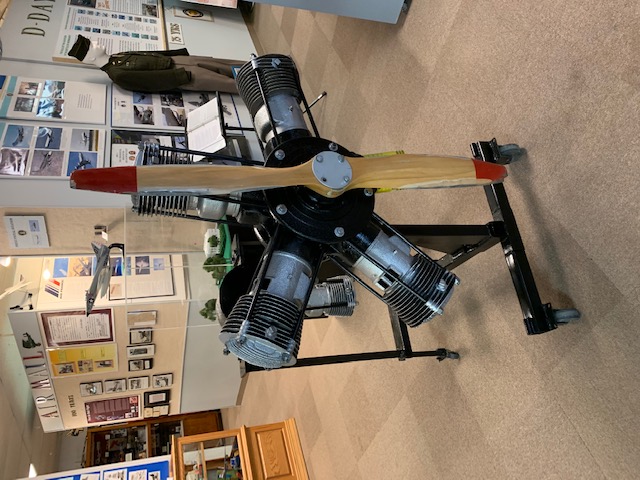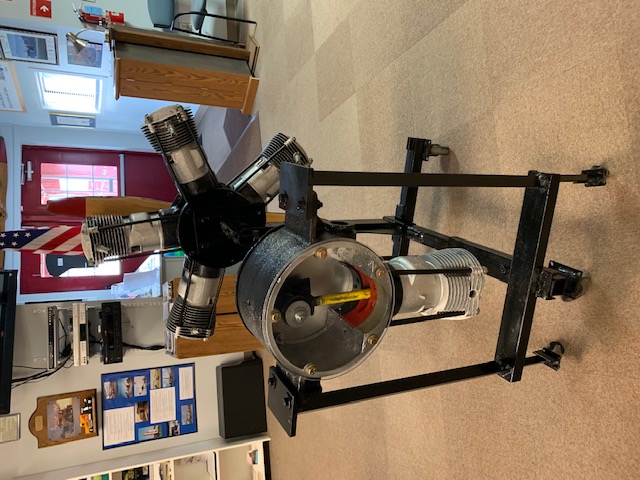


Frederic Engine - NEED A Video - Demo of Cut Away View
This Frederickson Model 5A was manufactured in
Bloomington, Illinois in 1916. It is a 5 cylinder, 70 hp, 2-
cycle, radial and rotary type engine designed and built for
aviation use. Its unique design was developed by C. E.
Frederickson – he invented a curved seat intake valve that
required no springs and operated by way of the connecting
rod sliding each valve at the proper timing. It was further
unique in that the engine and propeller (attached to each
other and moving as a unit) rotated around a driveshaft that
was fixed to the airframe.
There were 2 initial engines designs, a single cylinder (test
engine) and a 5 cylinder single row radial and rotary. Both
the single and 5 cylinder models were tested by the US
Government Signal Corps in 1918 at McCook Field in
Dayton, Ohio. Testing was done in preparation for the
WWI effort. In the 5 cylinder engine, a piston froze and
broke a cylinder after 75 minutes of operation during the
100 hour test run, thus stopping the engine while under full
throttle (1000 rpm) with a standard propeller.
The World’s Motor Company had planned to introduce 6
cylinder and 10 cylinder (double row 5 cylinders with 180
hp) versions before the company ultimately failed due to
lack of market penetration.
The remnants of the first two engines were kept by Marion
McClure, an early aviator. By 1980 the boxes of parts were
in the possession of Donald J. Lockwood of Chicago. In
2018 Mr. Lockwood donated the boxes and engine
remnants to the Prairie Aviation Museum.
The Prairie Aviation Museum volunteers have restored both
the one and 5 cylinder engines to the point where they can
be displayed and continue to tell the story about an early
aviation engine from Bloomington, Illinois - it should have
been destined for greatness but ultimately did not. In
retrospect, it has been suggested that the use of higher
quality metals may have allowed this engine design to be
very successful and even changed aviation history.
Special thanks to Heritage Machine and Welding,
Mechanical Devices, and McLean County Glass
and Mirror for donating components and expertise
to rebuild these engines for display.